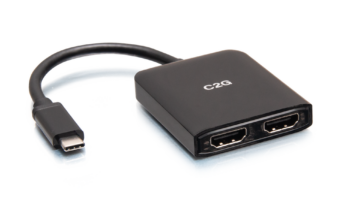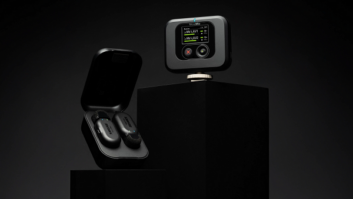Israel-based Amimon plans to demonstrate short-range wireless streaming of uncompressed high-definition video using a technology said to deliver performance equivalent to a wired HDMI connection.
The technology, called Wireless High Definition Interface (WHDI), is a cable-replacement technology said to offer multiple advantages —lower cost, higher picture quality, and compatibility with legacy sources — over such wireless standards as ultrawideband (UWB) and IEEE 802.11n, said cofounder and marketing VP Noam Geri.
At an official International CES suite at the Las Vegas Hilton, the company will demonstrate a proof-of-concept solution using a field-programmable gate array (FPGA) chip rather than a DSP or ASIC. A production-quantity FPGA, costing manufacturers “hundreds of dollars,” will be available in mid-2006 for use in high-end early adopter products, Gray said. By the end of 2006, the company hopes to make available ASICs enabling product rollouts in 2007. In high volumes, the ASICs will cost manufacturers only $10-$15, he said.
The technology’s advantages result in part from Amimon’s use of a video-optimized modem that uses 20MHz of bandwidth in the unlicensed 5GHz band to send video at speeds up to 1.5Gbps to 10 to 15 meters in a room or through several walls, Geri explained.
Because the video modem handles such high video rates, WHDI sends 720p and 1,080i video in uncompressed form as if it were a wired HDMI connection. As a result, the technology doesn’t require the use of real-time compression to squeeze the video into the narrower wireless pipes of 802.11n or UWB. Such compression, as practiced in current standard-definition wireless-transmission products, adds latency and reduces picture quality, Geri contended. “We have a big picture-quality advantage.”
Because real-time compression isn’t needed, manufacturing costs are reduced, he added. “Real-time compression is very much more expensive than an ultrawideband engine itself, and no one has demonstrated wired-quality real-time compression with ultrawideband,” Geri said.
“In overall complexity of the solution, we’re roughly the same as 802.11n, so there’s no reason for our solution to add any more cost than 802.11n in high volume,” Gray contended.
Because the WHDI solution sends uncompressed video, it’s a “universal wireless interface” that “future-proofs a display” and enables it to work with any legacy video source, he continued. The display is future-proofed because “you won’t need multiple decoders in a TV,” such as MPEG-2, MPEG-4 or Windows Media Video (WMV) decoders, he said. Multiple video-compression codecs are already in use or, or soon will be, in the consumer electronics market. He pointed to cable and satellite operators’ use of MPEG-2, cable’s slow rollout of MPEG-4, and the HD DVD format’s use of MPEG-2 and Windows Media 9.
A WHDI-embedded display will also work with any legacy video source, he continued, as long as the source is connected to an outboard WHDI dongle.
Geri cited additional factors behind the technology’s advantages, including the use of MIMO (multiple input/multiple output) technology that’s also used in 802.11n. “But MIMO alone is not enough,” he said. It’s our video modem technology. Standards-based modems are optimized for data and treat all data equally,” he said. “We have a video-specific modem over a channel.”
MIMO technology, he noted, uses multiple antennas in a transmitter and receiver, each antenna sending and receiving different information.
To make his point about his technology’s ability to transmit uncompressed HD video, he pointed out that the bandwidth required for uncompressed 1,080i HD transmission is 1.5Gbps, while compressed HD needs only 20Mbps. Uncompressed SD streams need 150Mbps to 300Mbps, the latter for DVD quality.
In contrast, only about a third of UWB’s 480Mbps raw data rate is available for video transmission, though about half of the 480Mbps is available for data networking. The same is true of 802.11n, he said.
Amimon is based in Herzlia, Israel and has U.S. operations in Santa Clara, Calif. The startup is funded by venture capitalists.













